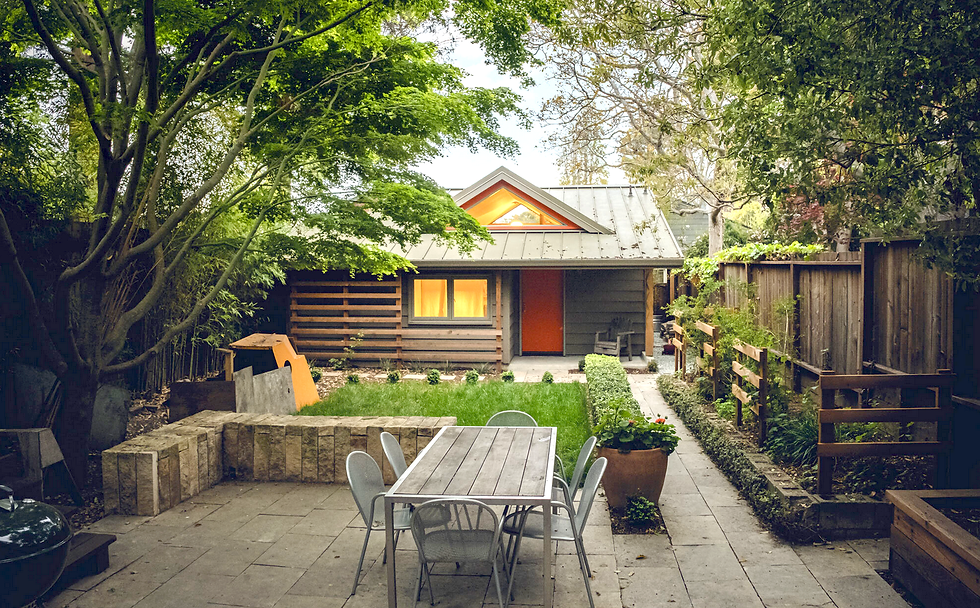Choose Building Materials for People and Planet
- wbdesignloop
- Aug 21, 2020
- 3 min read
Updated: Dec 8, 2021
- By Rachelle Padgett, Synthesis Interiors and Color.


As a child, the tarantula preserved in an old pickle jar of formaldehyde on our workshop table seemed a perfectly normal expression of being raised by an engineer father and science teacher mother. Suspended in golden brown liquid, Fuzzy had the radiance of a youthful arachnid well into his third decade of non-life. I remember my fascination with his omnipresence. I made introductions to innumerable horrified and curious friends, years passed, and he was still there. How could this be?
I’m not sure that question came fully to mind until much later, when I began my career as an interior designer, focused on working with materials that tread lightly on the earth and her inhabitants. This magical substance that could keep a spider in existential limbo is also an additive in composite wood products, glues and adhesives, fabrics and insulation. Formaldehyde vapor is a more common concern for household exposure than its liquid form, and can cause eye, nose and throat irritation, headaches, nausea, and damage to the kidneys, liver and central nervous system. The NIH, CDC and FDA list formaldehyde as a known human carcinogen.
You breathe what you build. While formaldehyde is a naturally occurring substance, your kitchen cabinets or particle board bookcase likely contain added formaldehyde in the resin binders that hold them together. Formaldehyde is one of many volatile organic compounds. VOCs are what give paint its distinctive odor and form the precursor to smog. They are the primary contributor to poor indoor air quality, which, according to the EPA, is five times more polluted than outdoor air. The average American spends 90% of their time indoors, so the impact of these chemicals is significant.
There is good news. The California Air Resources Board has set standards applying to products sold nationwide. Building materials carrying a CARB ULEF (ultra low emitting formaldehyde) or NAF (no added formaldehyde) label adhere to formaldehyde levels within safety limits. Greenguard broadly addresses VOC emissions, while Greenguard Gold products are tested for a greater number of VOCs and meet California’s Department of Public Health’s indoor air quality criteria. The building industry has been proactive in developing healthier alternatives to products that conventionally contain toxic chemicals. Here are some easy tips for keeping formaldehyde and other toxins out of your home.
Wet Applied Products
what: paints, stains, sealers, adhesives
avoid: products marketed as antimicrobial
look for: zero or low VOC labels, natural clay plasters and oil finishes


Engineered Wood
what: cabinets, flooring, furniture
avoid: imported particleboard
look for: used or vintage, CARB
ULEF/NAF compliant

Upholstery
what: mattresses, sofas, chairs
avoid: polyurethane foam and halogenated flame retardants
look for: products made prior to 1970s or after 2014 with TB117-2013 label, natural latex
Helpful Tips
- Let it breathe. Air out new wood or upholstered furniture in the sun for a few days
to off-gas.
- Ventilate your work space when you are painting or refinishing, both during
and after application.
- Place activated charcoal pellets on non porous dishes around your home to absorb toxins.
- Use an air purifier with an active carbon filter designed to remove VOCs.
- Houseplants clean the air naturally! Try philodendron, bamboo palm, rubber plant,
English ivy, Boston fern.
- Use non-toxic cleaning supplies or make your own from vinegar, baking soda
and castile soap.
- Keep a shoe free home to avoid tracking in oil and pesticides from the street and yard.




Comments